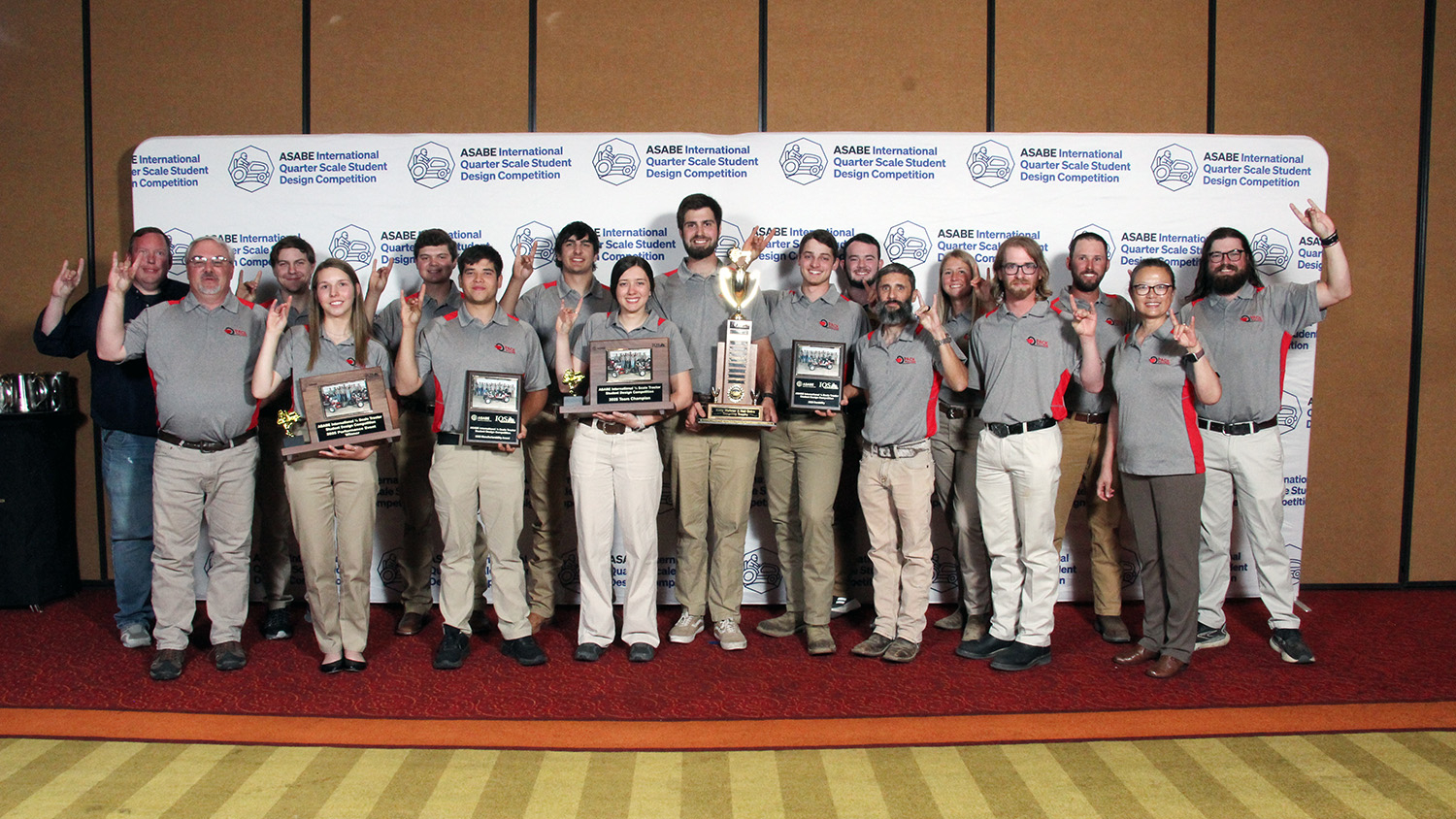Student-driven
Joint NC State/UNC Asheville Mechatronics students construct electric race car from scratch

By UNC Asheville
“Some of this stuff you can’t just Google,” says Nick Grandstaff, flashing a grin.
An understatement, to say the least. The mechatronics engineering student—who’s studying with the Joint NC State/UNC Asheville Engineering Program—is detailing the long road of his ambitious senior design project: building an electric race car from scratch as part of the Formula SAE competition.
Back in April, Grandstaff, the captain and steering/suspension lead of a 10-student crew, was still rightly sweating the finer details of the project. They were two months away from the event itself, set for June 14–17 in Brooklyn, Michigan, and despite semesters of preparation, they’re in expect-the-unexpected mode. Some issues, says electrical lead Maximo Perasso, are “notoriously difficult to simulate,” so “real-world testing is the only way to figure them out.”
But Grandstaff and Perasso have plenty of brain power at their disposal. They’ve been collaborating with eight other versatile seniors piloting specific areas of the project: Trysten Ruhland (powertrain), Lief Van Sliedrecht (documentation), Robert Brenneman (chassis), Sarah Vyvyan (business/administration), John Sauvigne (fabrication and design), Hunter Horan (finance), Steven Anderson (vice chair of marketing/finance), and Gustavo Melo-Perez (sponsorship/marketing). They’ve also been guided, albeit gently, by two faculty advisors: NC State Teaching Professor and UNC Asheville Lecturer of Engineering N. Moorthy Muthukrishnan and STEAM Studio co-founder Sara Sanders.
Naturally, a lot of meticulous science—and trial and error—is steering this enterprise. But it comes from a personal place: Hoping to combine two of his passions, motorsports and engineering, Grandstaff joined the program’s SAE Club over four years ago, eventually finding a group of likeminded students. “We were working all those years, making slow progress,” he says. “So we finally decided, if we actually want to get a car built, we have to make it a senior design project. That’s when we got a lot of our friends to join.”
Sanders worked with a previous Motorsports team back in 2016, attempting to build a go-kart in the STEAM Studio. Sanders is thrilled to support another eager group:
They have a ton of enthusiasm and drive,” she says. “And one of the things that’s particularly compelling is that it is student-driven.”
In a critical part of the process, the students raised thousands of dollars in funding, helping pay for tires, brake components, racing gear, chassis tubing, and battery cells, among other costs. The money was essential, but the biggest hurdle might have been time management.
I think the technical stuff came very easily. The Mechatronics [Engineering] Program does a great job of preparing our students for a project like this, but the challenges that come from this competition are so broad and interdisciplinary and well-rounded, it reflects the actual industry environment,” says Sanders. “It’s a big undertaking, and they’ve definitely risen to the challenge.
That challenge involved intense deep dives, acquiring all that knowledge you can’t access with a quick MacBook search. “Pretty much everybody had little to zero experience in the motorsport world, so we were starting from nothing,” says Grandstaff. “We did a lot of research to see what other teams were doing, what options were expensive, what designs were easy to build. In terms of building it, we had to realize how long it takes to make a certain part of the car. At the beginning, Sara said, ‘Take the time you think it’ll take, and then multiply that by four or five.'”
And as Perasso notes, much of this experience could only be gathered in person. “We actually attended some physical conferences in California with Dr. Moorthy and Rob and Gustavo,” he says. “We all went to California to a Tesla-hosted SAE convention, where we got a whole bunch of networking done, along with two days straight of pure electrical knowledge.”
It took plenty of fumbling and sweat, but they’re immensely proud of the end product. Regardless of how they place in the competition, they’ve already won.
“We’ve taken our rolling chassis on campus,” says Grandstaff. “We’ve had an open house at the STEAM Studio. After working on the car for so long, it makes you feel really good when somebody walks up with a big smile on their face. All the conversations, all the stories, all the people you get to meet, the experiences you hear from talking to other people—that’s what I really enjoy.”
This post was originally published by UNC Asheville.










